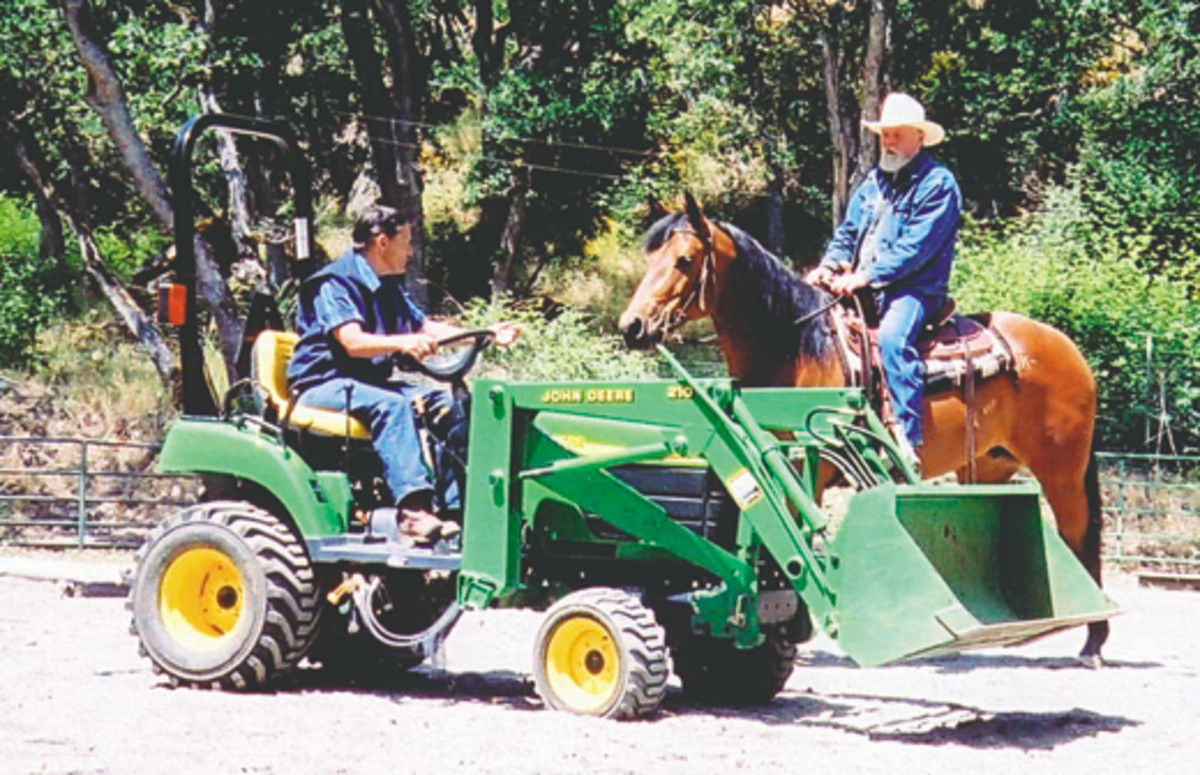I have an 11-year-old Quarter Horse gelding. I ride him on trails that allow motorized vehicles. He just can’t seem to stop spooking when he hears and sees any kind of motorized vehicle, including a tractor. How do you teach a horse not to spook at motorized vehicles?
David Hunt
Deming, New Mexico
David, I know it is a hassle to be on a trail and have a motorized vehicle come toward you or come up behind you. This can cause a horse to spook, which can be dangerous for both horse and rider. You need to desensitize your gelding to scary, noisy vehicles.
First, build a solid training foundation on the ground, using the techniques I’ve described in past issues. As you do, you’ll also build a bond of mutual trust and respect, with you in the leadership position. Your gelding will also learn to be secure with you as his leader under saddle.
Step-by-Step Technique
Here’s how to desensitize your gelding to scary vehicles. You’ll need access to a tractor or an ATV and a helper to drive it. Before you begin, halter your gelding, and snap on a six-foot-long lead rope.
Step 1. Work on sight acceptance. Teach your gelding to accept just the sight of the vehicle. Have your helper sit on the vehicle about 100 to 200 feet away, with the engine off. Lead your gelding slowly toward the vehicle. He’ll be able to see it, but not hear it, so there will be just one stimulus that might cause him to spook.
If your gelding becomes upset as you approach the vehicle, stop, and allow him to relax. Then lead him toward the vehicle again. You might need to start and stop him several times-that’s okay. When you reach the vehicle, allow him to stand and sniff it for a few minutes.
Step 2. Add sound at a distance. When you can lead your gelding to the vehicle several times in a relaxed manner, desensitize him to the vehicle while the engine is running. First, devise “engine on” and “engine off” hand signals with your helper, such as thumbs up and thumbs down.
Begin with the engine off. Lead your horse 100 to 200 feet from the vehicle, then face the vehicle. Signal to your helper to start the engine, and focus on your gelding’s reaction. If your gelding becomes upset, signal to your helper to shut off the engine. When your gelding relaxes, signal to your helper to start the engine again. Be patient. With enough repetitions, your gelding will accept the engine noise.


Step 3. Approach the vehicle. When your gelding accepts the engine’s noise at a distance, gradually lead him toward it. If he becomes upset, stop, allow him to
relax, tell him he’s a good boy, and give him a soft pat on his shoulder. Then continue toward the noise. With gentle repetition, he’ll learn to approach the vehicle in a relaxed manner.
Step 4. Add movement. Now you’re gelding is ready for the vehicle to move. Ask your helper to slowly drive away from you. Lead your gelding behind the vehicle at a safe distance. He’ll likely accept being led toward the vehicle, since it’s going away from him, rather than toward him. If he does get upset, stop him, allow him to relax, then go on.
Step 5. Mount up. Tack up your gelding, and mount up. Ask your helper to start the vehicle’s engine, but keep it stationary. Ask your gelding to walk toward the vehicle. He should stay relaxed, but if he does spook, keep control with an under-saddle lateral-flexion cue. (See “Head-Tossing Help,” May/June ’06.) Allow him to calm down and relax before you continue your approach. Be patient. It might take several sessions before he stays calm as he approaches the loud, scary object.
Step 6. Add movement. When your gelding stands relaxed next to the running vehicle while you’re mounted, ask your helper to slowly drive away. Ask your gelding to slowly follow the vehicle, but at a safe distance. When he completely accepts following the vehicle, gradually desensitize him to the vehicle coming toward him by using the same ground and in-saddle methods just described. Be patient, and stay safe. If you need to, ask a qualified trainer or riding instructor to help you.






